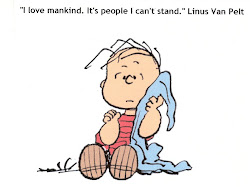In 1974, writer Peter Benchley published Jaws, a novel about a rogue Great White shark that terrorizes the fictional coastal community of Amity Island. The left pic is the cover of the hardback first edition. Not so scary. But then Benchley’s novel was adapted into that 1975 Stephen Spielberg film that scares us (at least me) to death after 35 years. And we got the right hand pic to go along with the film. “My, what big teeth you have, Hollywood Shark.” Rapid evolution at work, I guess.
As soon as I heard about Benchley’s book I knew where he got the idea for the story line. In a very warm 1916 summer, five people were attacked and four killed along the New Jersey shoreline in the space of just 13 days. I knew this because when I took up SCUBA diving in my high school years I was also developing a professional interest in oceanography. And, like most any teenage boy, gruesome stories were appealing, so I read everything I could get my hands on about shark attacks, including the 1916 event. While they never proved the NJ attacks were the work of a single shark, or that it was a Great White, we knew – and Benchley knew. It had to be.
The U.S. Navy put a lot of research into the subject of shark behavior in WWII with so many downed pilots and aircrews and sunken vessels to deal with, especially in the warm South Pacific waters. Copper sulfate mixed with dye was the best repellent those wartime scientists could come up with. It was of dubious value as in actual tests some feeding sharks would wolf down the containers for a snack. I did not read Benchley’s book when it came out and my wife and I were still active SCUBA divers when Jaws became a summer blockbuster hit. We waited almost two years before we saw Hollywood Jaws.
In the film, Chief of police Martin Brody, biologist Matt Hooper, and fisherman Quint hunt the shark after it kills four people. Spielberg's film makes reference to the NJ attacks: Brody (Roy Scheider) and Hooper (Richard Dreyfuss) urge Amity's Mayor Vaughn (Murray Hamilton) to close the beaches on the Fourth of July after the deaths of two swimmers and a fisherman. Hooper explains to the mayor, "Look, the situation is that apparently a great white shark has staked a claim in the waters off Amity Island. And he's going to continue to feed here as long as there is food in the water." Brody adds, "And there's no limit to what he's gonna do! I mean we've already had three incidents, two people killed inside of a week. And it's gonna happen again, it happened before! The Jersey beach! ... 1916! Five people chewed up on the surf!"
By the way, Spielberg’s screenplay was/is much superior to Benchely’s book. In the book, novice author Benchley decides that he just HAS to insert sex into a perfectly good terror story. So he sets up a super awkward affair between the Woods Hole scientist Hooper and Chief Brody’s wife. Awful, awkward and amateurish dialog and scenes are the result. A young but wise Spielberg knew better than to have his film go down that literary dead end. He showed early promise, that Spielberg.
The trivia and backstories about the filming of Jaws abound and could fill several posts. But I am drawn to the mechanical shark, Bruce (named after Spielberg’s lawyer). Created back in the shops at Hollywood, they (there were several partial shark bodies so the filming could occur at different angles while crews worked the fish’s mechanical levers and internal gears) had guts made of pipes, levers, and battery powered servo motors. But I guess they don’t have salt water back in California because the fabricators never took into account what the Martha’s Vineyard water would do to all those iron innards. Bruce was a major pain in the butt and here’s where Spielberg caught a lucky break. While waiting for his crews to get the various Bruces to work correctly, Spielberg went ahead and filmed as much ahead as he could. So fortuitously you don’t see the Great White in all his glory until well into the movie. The tense soundtrack and a surfacing fin now and again fill in very well and build the suspense up and up until when Bruce does raise his head above water, in all his toothy splendor, we film-goers are ready to leap out of our seats. And I do – every time. It never gets old.



1 comment:
Having just read The Science of Fear, it is amusing to read the "clear the beaches" dialogue. We tend not to respond to danger unless it is immediate and catastrophic - at least in our imagination.
Post a Comment